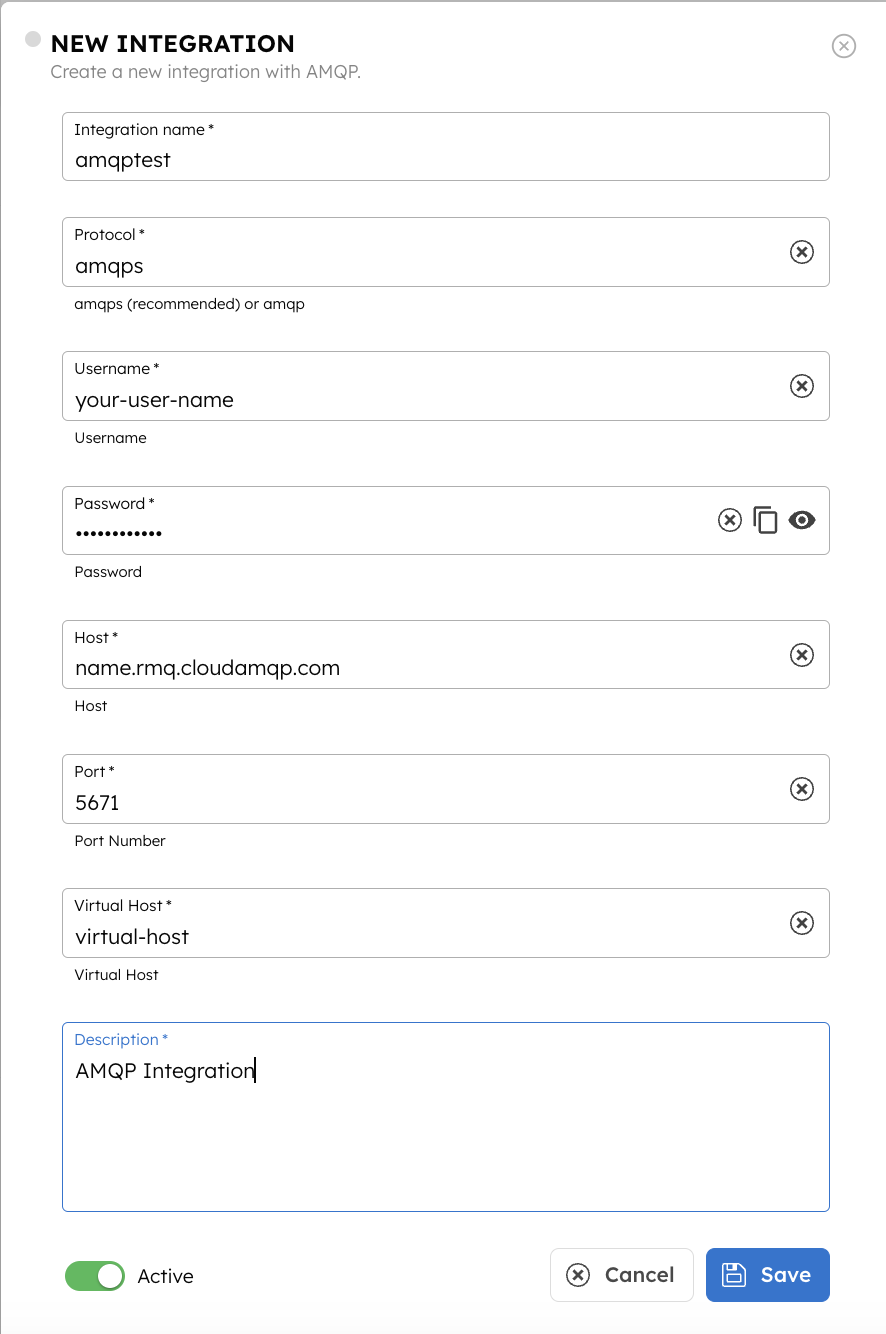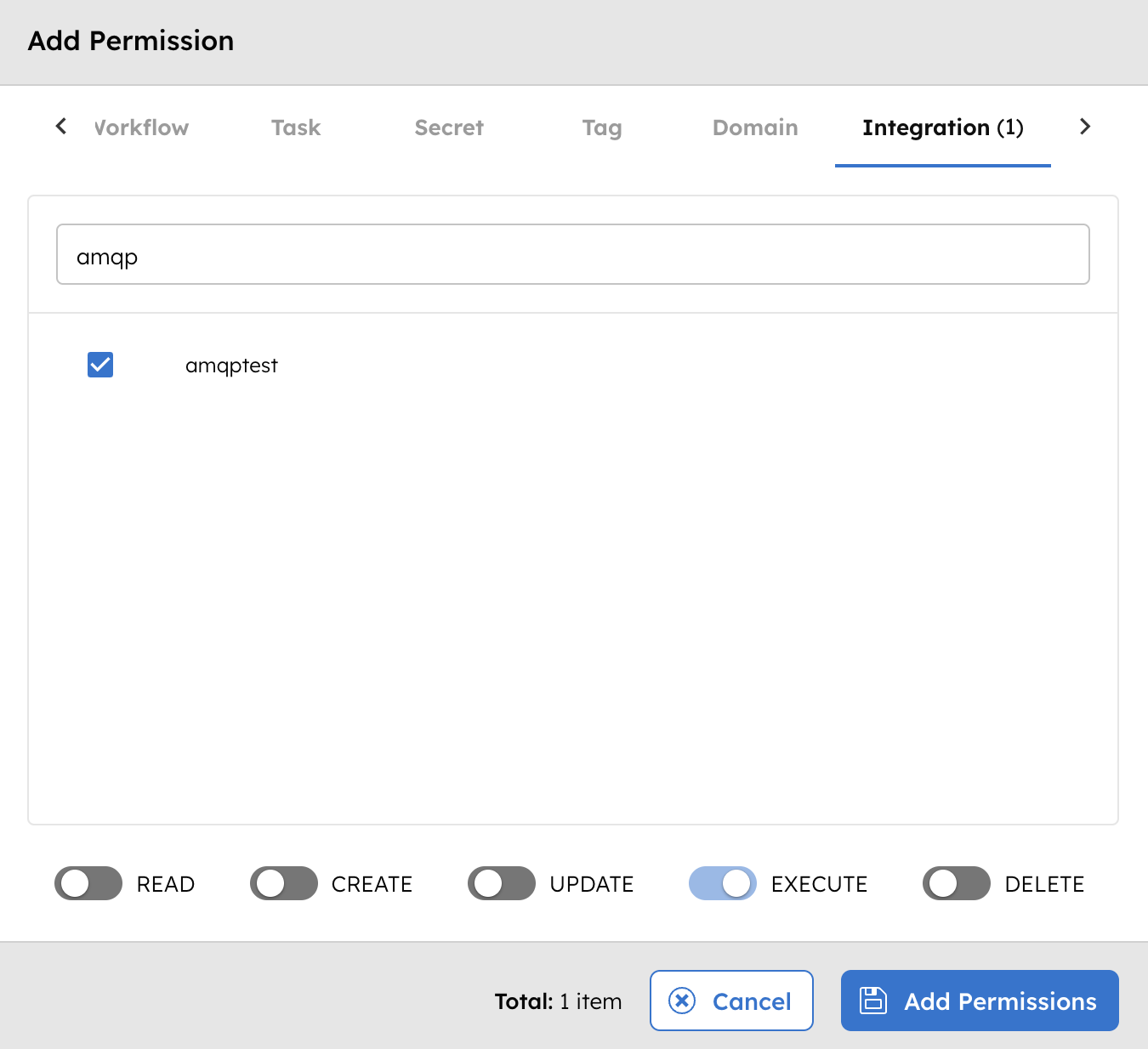AMQP Integration with Orkes Conductor
To use the Event task, Event Handler, or enable Change Data Capture (CDC) in Orkes Conductor, you must integrate your Conductor cluster with the necessary message brokers. This guide explains how to integrate AMQP with Orkes Conductor to publish and receive messages from queues. Here’s an overview:
- Get the required credentials from AMQP.
- Configure a new AMQP integration in Orkes Conductor.
- Set access limits to the message broker to govern which applications or groups can use it.
Step 1: Get the AMQP credentials
To integrate AMQP with Orkes Conductor, set up AMQP according to your requirements and retrieve the following credentials from your AMQP console:
- Username
- Password
- Host
- Port
- Virtual host
Step 2: Add an integration for AMQP
After obtaining the credentials, add an AMQP integration to your Conductor cluster.
To create an AMQP integration:
- Go to Integrations from the left navigation menu on your Conductor cluster.
- Select + New integration.
- In the Message Broker section, choose AMQP.
- Select + Add and enter the following parameters:
| Paramters | Description |
|---|---|
| Integration name | A name for the integration. |
| Protocol | The communication protocol to be used. Supported values:
|
| Username | The username to authenticate and authorize the connection. |
| Password | The password associated with the username. |
| Host | The hostname of the server where the message broker is running. |
| Port | The port number on the host where the message broker is running. The default ports are:
|
| Virtual Host | The namespace that allows multiple messaging environments to coexist within a single broker. |
| Description | A description of the integration. |

- (Optional) Toggle the Active button off if you don’t want to activate the integration instantly.
- Select Save.
Step 3: Set access limits to integration
Once the integration is configured, set access controls to manage which applications or groups can use the message broker.
To provide access to an application or group:
- Go to Access Control > Applications or Groups from the left navigation menu on your Conductor cluster.
- Create a new group/application or select an existing one.
- In the Permissions section, select + Add Permission.
- In the Integration tab, select the required message broker and toggle the necessary permissions.

The group or application can now access the message broker according to the configured permissions.
Next steps
With the integration in place, you can now:
- Create Event Handlers.
- Configure Event tasks.
- Enable Change Data Capture (CDC) to send workflow state changes to message brokers.